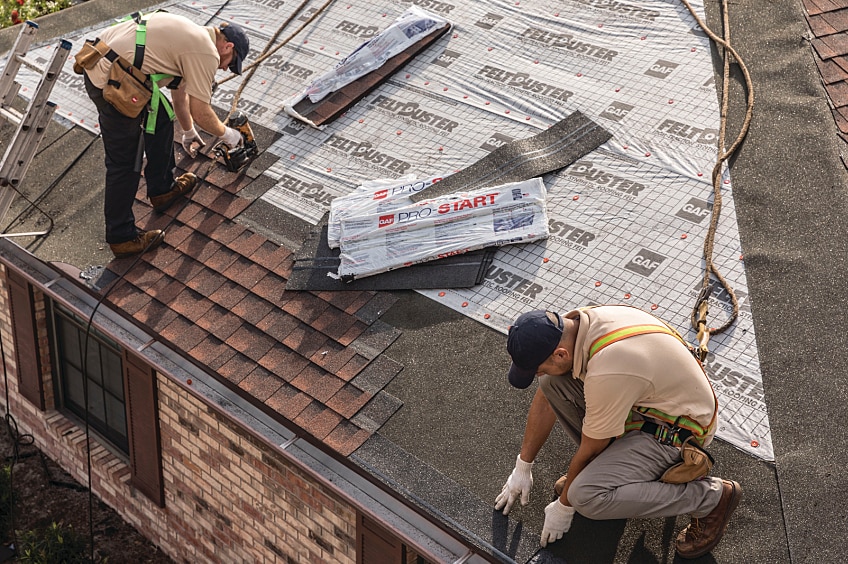The Ultimate Guide to Understanding Various Sorts Of Roof Roof Shingles Materials
Understanding the numerous types of roof tile materials is vital for home owners seeking to make educated choices that line up with their demands and preferences. From the economical nature of asphalt tiles to the beauty of timber and the longevity of metal and slate, each choice offers distinct benefits and obstacles.

Asphalt Tiles
Asphalt tiles are a preferred selection for homeowners due to their affordability, sturdiness, and simplicity of installment. Made up of a fiberglass floor covering saturated with asphalt and coated with mineral granules, these roof shingles give reliable protection against weather components while ensuring a lengthy life-span.
There are 2 main types of asphalt shingles: three-tab and building. Three-tab tiles are light-weight, affordable, and easy to install, making them an usual option for budget-conscious house owners. On the other hand, architectural tiles include an even more dimensional look, offering enhanced aesthetic charm and improved wind resistance, often at a somewhat higher cost.
Among the essential benefits of asphalt tiles is their adaptability; they come in a variety of colors and designs, allowing homeowners to conveniently match their roofing with the overall visual of their home. Additionally, they commonly have a life expectancy ranging from 20 to thirty years, depending on the top quality and installation techniques.
Maintenance is normally minimal, although normal inspections and cleansing can extend the life of the roofing. Overall, asphalt roof shingles remain a functional and reliable roof remedy, balancing expense, capability, and visual allure for a broad variety of household applications.
Wood Roofing Shingles
Timber shingles use an all-natural aesthetic that charms to several homeowners seeking a timeless, rustic search for their roofs. Normally crafted from cedar, ache, or redwood, these shingles offer an one-of-a-kind beauty and can enhance the overall character of a home. Their natural shades and structures can produce a cozy and welcoming ambience, making them a popular choice in different architectural styles.
One significant benefit of timber shingles is their insulating properties, which can aid control indoor temperature levels. Timber roof shingles require normal maintenance to prevent issues connected to wetness, such as rot and mold.
Regardless of their visual appeal, timber roof shingles may not be ideal for all climates, specifically in locations prone to wildfires. Home owners must also take into consideration the life-span of wood shingles, which commonly ranges from 20 to 40 years, relying on the type of timber and maintenance methods. In general, timber shingles can be a superb option for those that prioritize elegance and natural products in official website their roofing decisions.
Steel Roofing
Steel roofing has actually gained appeal among property owners and building contractors alike because of its resilience, durability, and reduced upkeep demands. Readily available in a variety of products, consisting of steel, aluminum, copper, and zinc, steel roof coverings provide convenience in design and visual allure. They can be found in different designs, from standing joint to metal shingles, enabling house owners to select a choice that matches their architectural vision.
One of the main benefits of metal roofing is its exceptional lifespan, often exceeding half a century with proper care. This longevity causes decreased replacement expenses in time, making it a cost-effective choice. In addition, steel roofings are immune to extreme climate problems, including hailstorm, wind, and snow, which improves their integrity.
In addition to their durability, steel roof coverings are environmentally pleasant, as they are usually made from recycled products and can be reused at the end of their life cycle. They likewise mirror solar radiant warm, contributing to power performance and reduced air conditioning prices. On the whole, steel roof covering incorporates aesthetic appeal with practical benefits, making it a progressively preferred alternative in modern construction.
Slate Shingles

Moreover, slate tiles are fire-resistant and do not warp or come to be fragile over time, contributing to their allure for home owners seeking a reputable roofing solution. The aesthetic versatility of slate is one more considerable benefit; it is offered in different dig this colors and textures, enabling for a customized look that can match any type of building design.
Installment of slate tiles, nonetheless, needs specialized skills because of their weight and the requirement for specific placement. This can bring about greater preliminary costs contrasted to various other roof covering products. The lasting value of basics slate, both in terms of sturdiness and possible power efficiency, commonly offsets these in advance costs.
Synthetic Alternatives
As homeowners increasingly seek alternatives to traditional materials, artificial roofing options have actually gotten popularity for their flexibility and cost-effectiveness. These cutting-edge products offer a blend of looks, performance, and toughness, making them an enticing choice for a wide variety of architectural styles.
Synthetic roof covering shingles are usually made from a combination of polymers and recycled materials, allowing manufacturers to create products that mimic the look of all-natural products like slate or wood without the associated upkeep challenges. roofer contractors. One of one of the most significant advantages of artificial shingles is their lightweight nature, which lowers the structural tons on a home. Furthermore, they are crafted to endure harsh climate conditions, using exceptional resistance to wind, hail storm, and UV radiation
On the whole, artificial roof covering products stand for a clever financial investment for those looking to boost their home's curb allure while ensuring lasting reliability and sustainability. As technology proceeds to advance, these alternatives are most likely to evolve, better strengthening their area in the roof market.
Conclusion
In verdict, the option of roofing shingle materials substantially impacts the aesthetic, sturdiness, and upkeep of residential structures. Asphalt shingles offer cost and simplicity of installment, while wood roof shingles supply all-natural beauty.